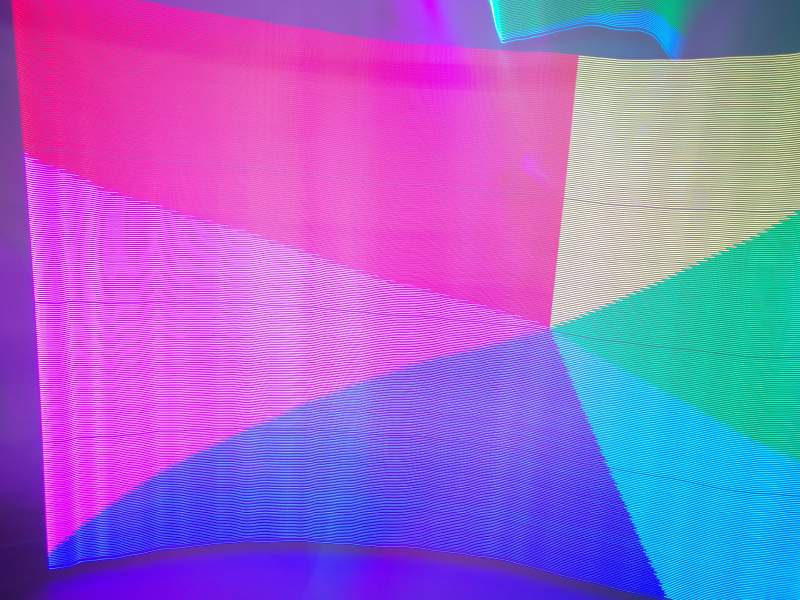Hologram Rail
Arduino ESP8266 frontendPrototype using a tablet
To try out the idea I built a prototype using the edge of a tablet screen. I made a simple JS script to slice up the image and project it onto the edge over a period of time. After that I set an exposure of multiple seconds on the camera and pulled the tablet across the camera.
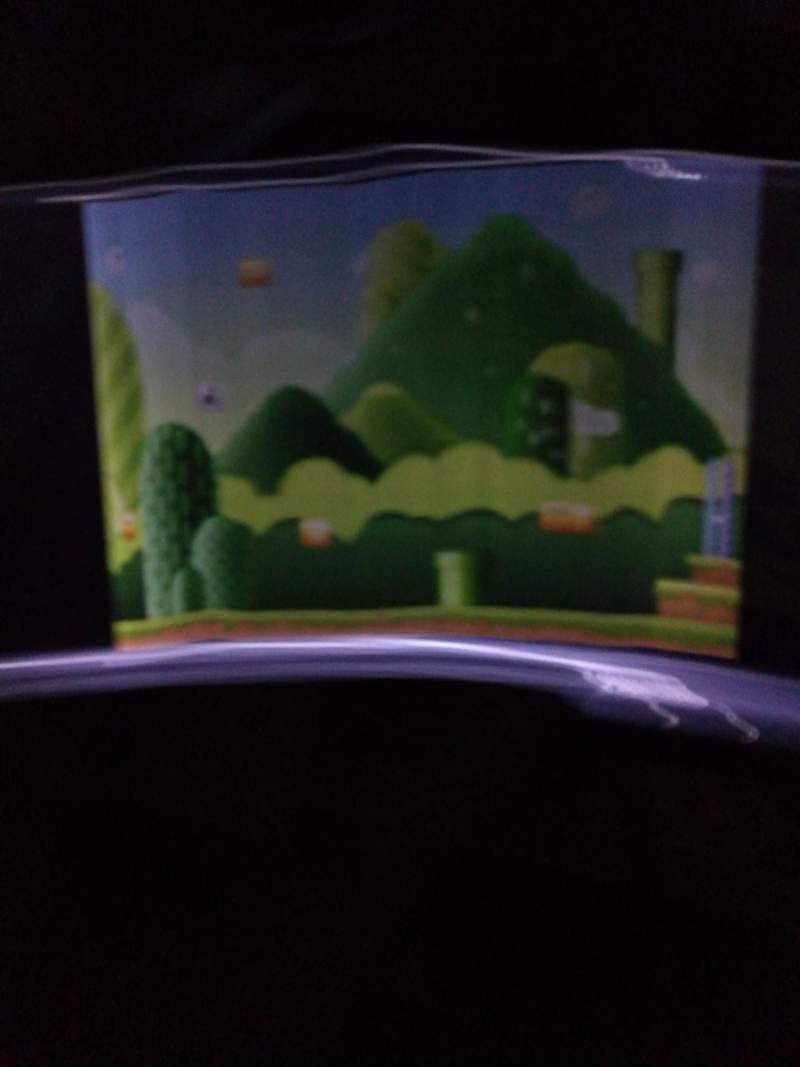
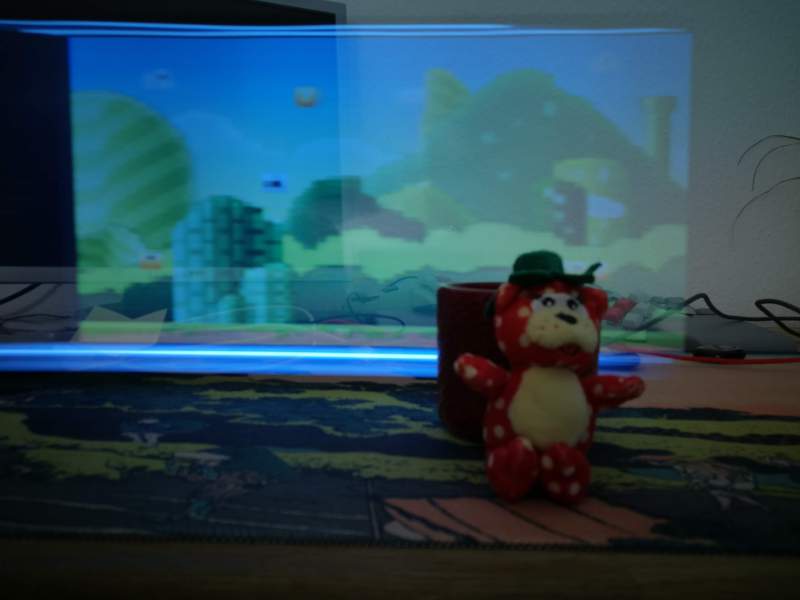
Circuit
The whole system consists of an Arduino UNO with an SD card module on it. This unit controls the WS2812B LED strip on the vertical stick. It gets the signal to start projecting from the metal bracket that is later mounted on the left end of the rail where the home position is.
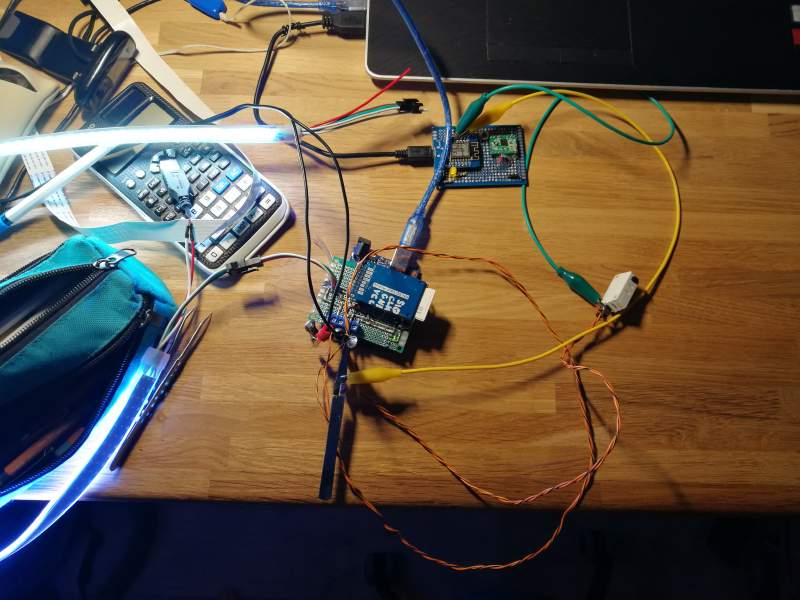
First images
This was the first image I created. At this point the rail was still not functional so I dragged the LED stick across the camera by hand.
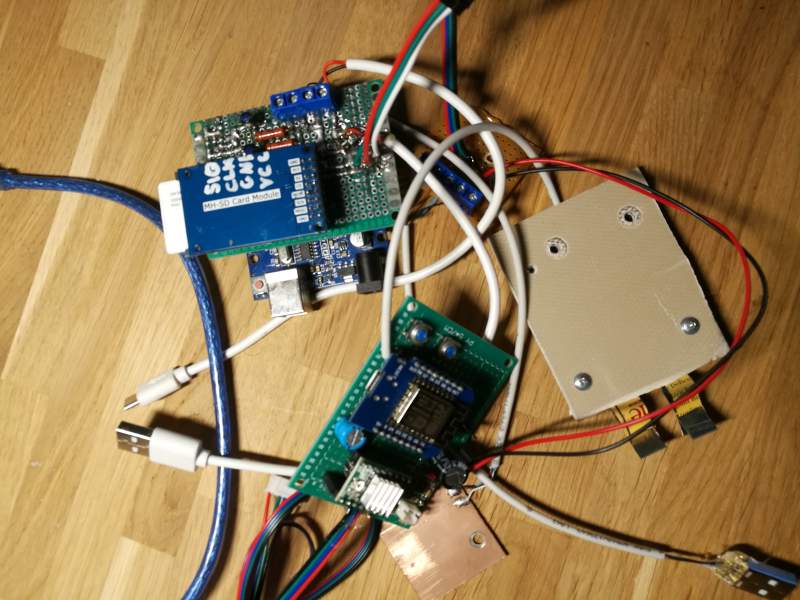
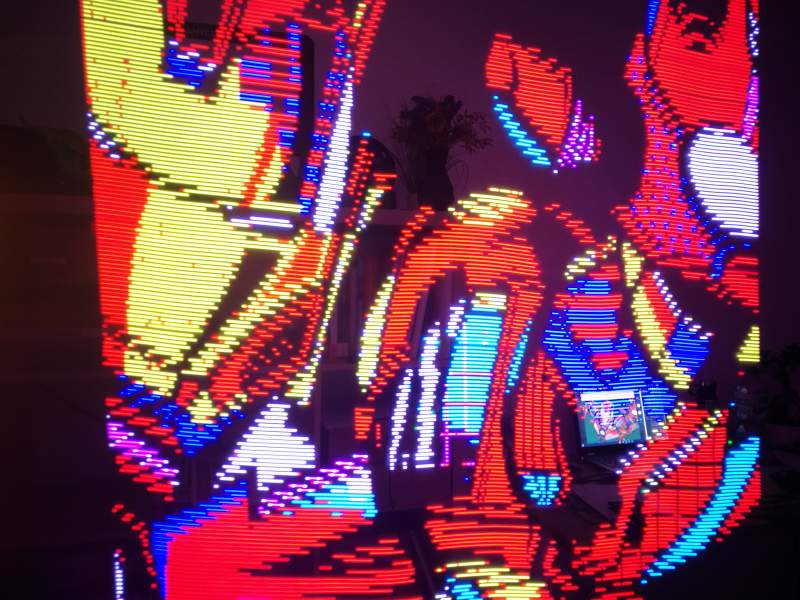
For the rail I used a metal reinforcement for door openings in concrete buildings. The rail where also the stick was mounted was made of wood scraps and 3D printed parts. To be movable I mounted a bunch of ball bearings from old roller skates.
Parallel to that I worked on a local web based dashboard to select the image to project, press the shutter and generate a QR code to download the image. For this system I used an old tablet of mine.
The heart of the system is a Raspberry Pi controlling the camera shutter, an ESP8266 controlling the stepper motor of the rail and the Arduino UNO powering the LED strip.
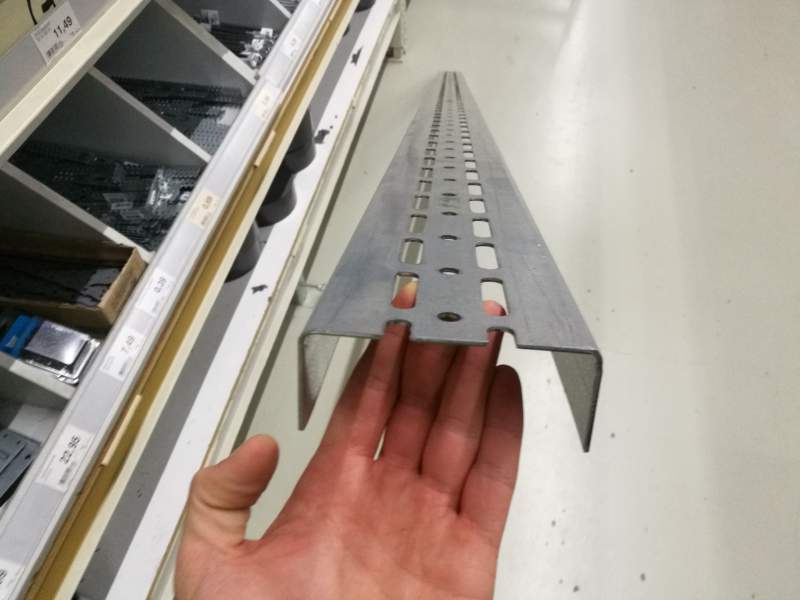
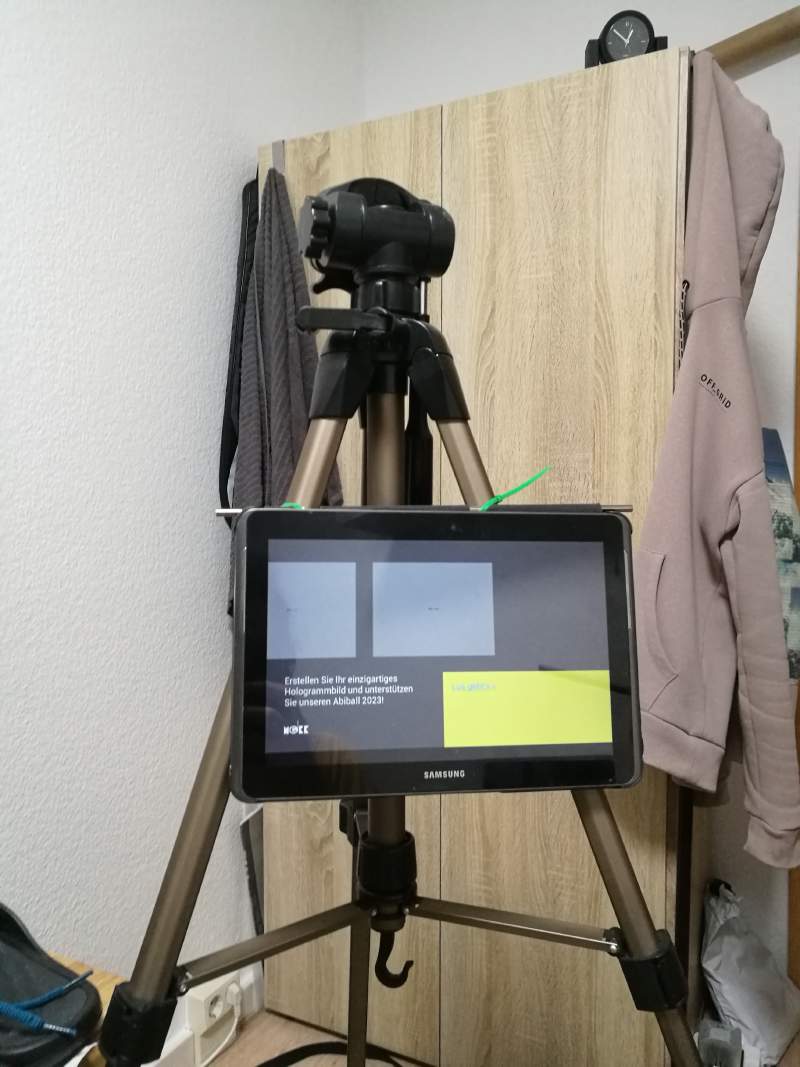
Color depth issue
Further experimenting showed that the limit of 512 bytes readable from the SD card per frame were not enough so I packed them more compact to be able to view more colors - still not all the colors the LEDs are able to show.
Motor torque issue
A stepper motor needs a high voltage to be able to create enough torque to pull such a trolley across the rail. The whole arrangement has to be pulled across in 2 to 3 seconds and therefore has to be accelerated quickly. For that I used a step up converter to convert the 12v of the car battery up to 30v.
